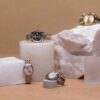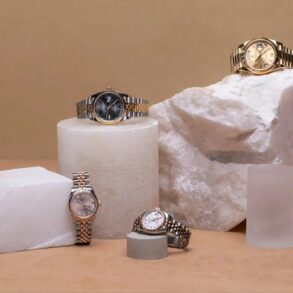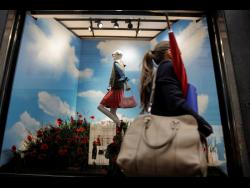
NFW’s founder and CEO is Luke Haverhals, who has a doctorate in chemistry from the University of Iowa.
Brett Rhoades for NFW
As plant-based materials increasingly replace leather in luxury goods, NFW is one of the companies working behind the scenes to bring vegan materials to fashion brands like Ralph Lauren, Patagonia, and Stella McCartney
This self-proclaimed “material innovations company,” whose name stands for Natural Fiber Welding, is a leader in the wave of vegan materials. NFW’s founder and CEO is Luke Haverhals, who has a PhD in chemistry from the University of Iowa, but always had an interest in economics.
“I asked myself, ‘What is a reasonable way to replace the entire plastics industry, economically speaking?’” Haverhals says. “I was on a quest to make sure humans were less dependent on carbon high toxin materials, I thought what I could do to solve this problem?”
The answer was in plants. Haverhals founded Peoria, Ill.-based NFW in 2015, envisioning a plastic-free future.
“People think plastics are cheap, but they’re among the most expensive and toxic things that humans ever tried to create,” he says.
THE ITEM
NSW provides fabrics for many brands, including Stella McCartney’s MIRUM-made handbags, which are 100% recyclable and circular—meaning at the end of their life, the material can be reused to make something else.
The name of this fabric comes from the Latin word for “miracle,” Haverhals says. “We don’t call it ‘leather,’ but it’s a leather-like material. It allows us to work with fashion designers and brands and we aim to start well, stay clean, and end well with regenerative materials. We don’t add bioplastics or polyurethane.”
The collection of NFW’s Mirum-fabric includes the Falabella MIRUM Tiny Tote Bag and the Frayme bag. They were launched at the Fall/Winter 2023 runway show at Paris Fashion Week in spring of 2023, and are available for pre-order, shipping out this month. They’re the world’s first luxury handbags crafted from this new vegan, plastic-free alternative.
McCartney aims to source 100% of her products from recyclables by 2025. “McCartney has been instrumental to NFW, she is a guiding light to the industry,” Haverhals says. “If we can get more luxury brands onboard, it will be better for others to get clean materials into their products, as well.”
The collection is a “call-to-action to take a stand for our planet,” McCartney said in a statement. “I have long dreamed of the day when we would see a plant-based alternative to leather that does not kill a single creature and can be easily given back to Mother Earth, without creating waste.”
(NFW is also funded by the Collab SOS Fund, a US$200 million fund which invests in companies that power a more sustainable economy. McCartney is one of its co-founders).
THE PRICE
As an example of the luxury goods NFW provides materials for, the Falabella Mirium Tiny Tote Bag sells for US$1,170.
WHAT’S THE GOOD?
NFW uses natural ingredients like vegetable oil and citric acid. “They can easily be turned into natural polymers when they break down,” Haverhals says. “We use natural rubber, cotton, we source regenerative cotton, we use cork, leftover from wine bottles, we use rice hulls, which are thrown out, a lot of things that are overlooked in the supply chain.”
WHAT’S NEXT
The company is gearing up for a launch with Ralph Lauren. It recently opened a factory in Peoria, as part of their expansion, and plans to expand to Europe, Southeast Asia, Sri Lanka, and China. “It’s important for us to be in China and we are proud to be partnering with them, helping take care of people and animals on the planet we share,” Haverhals says.
More than 1,500 brands reach out to NFW. “Everyone wants to better their brand,” he says. “When you think of shoes, bags and apparel, we are cleaning up the supply chain,” Haverhals says. “That’s our mission—to enable the world in a transparent, traceable way—where we don’t have any polyurethane goblins hiding in the closet.”
This post was originally published on this site be sure to check out more of their content.




